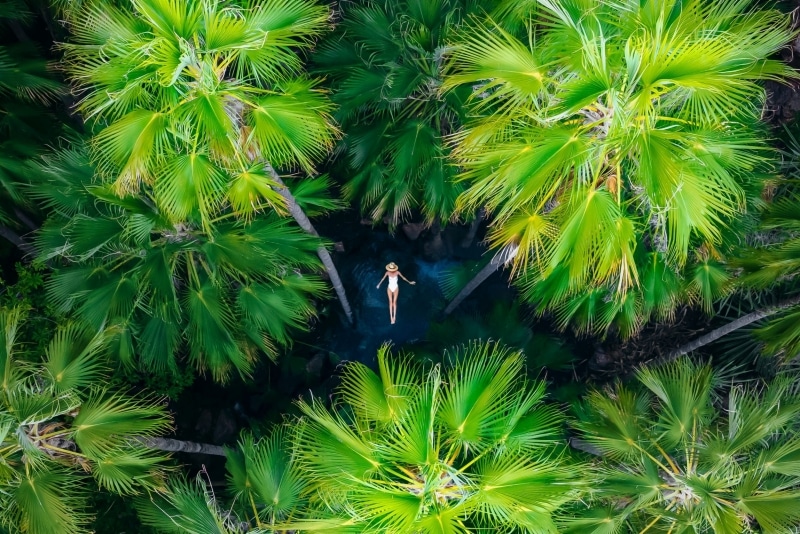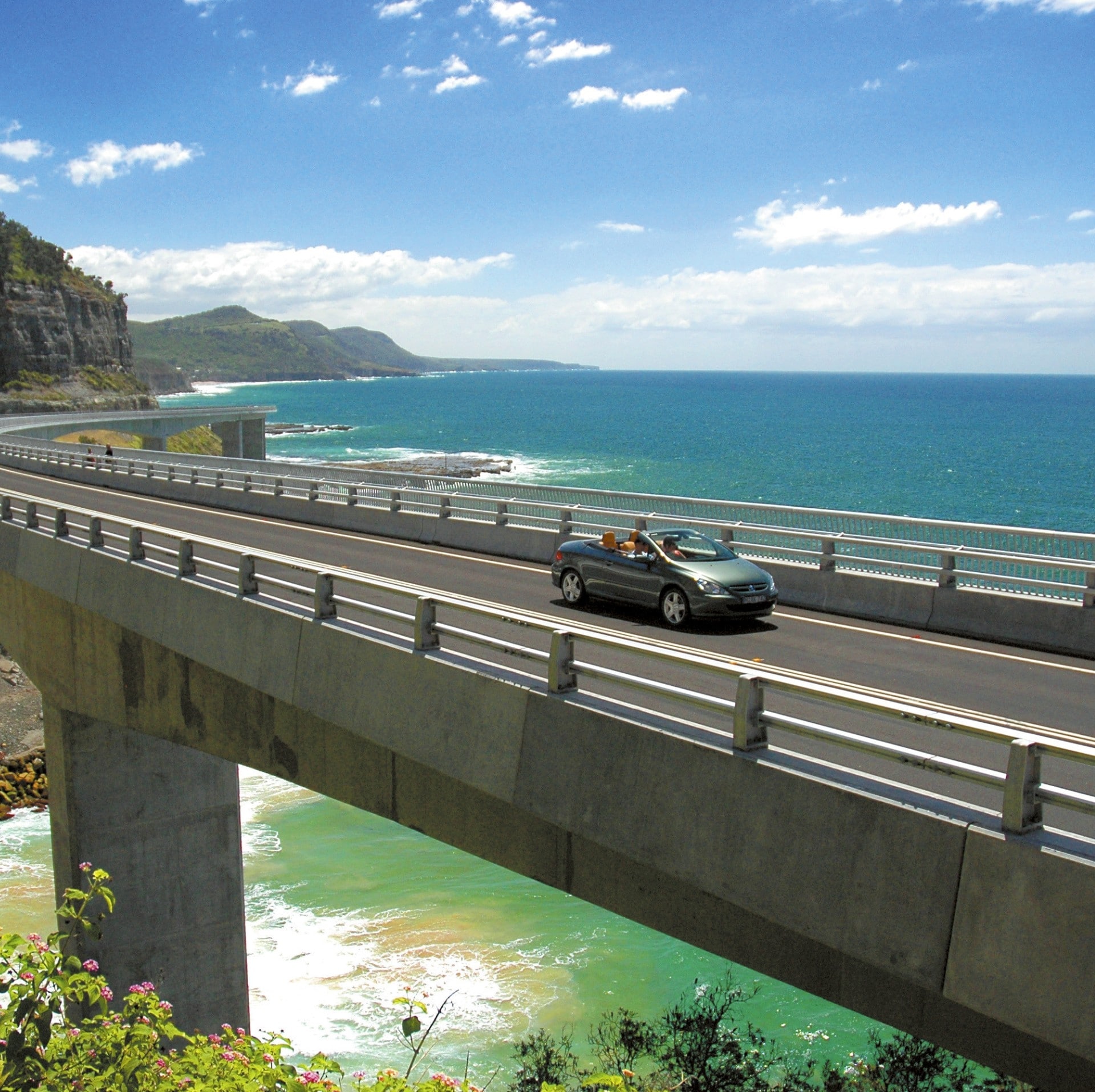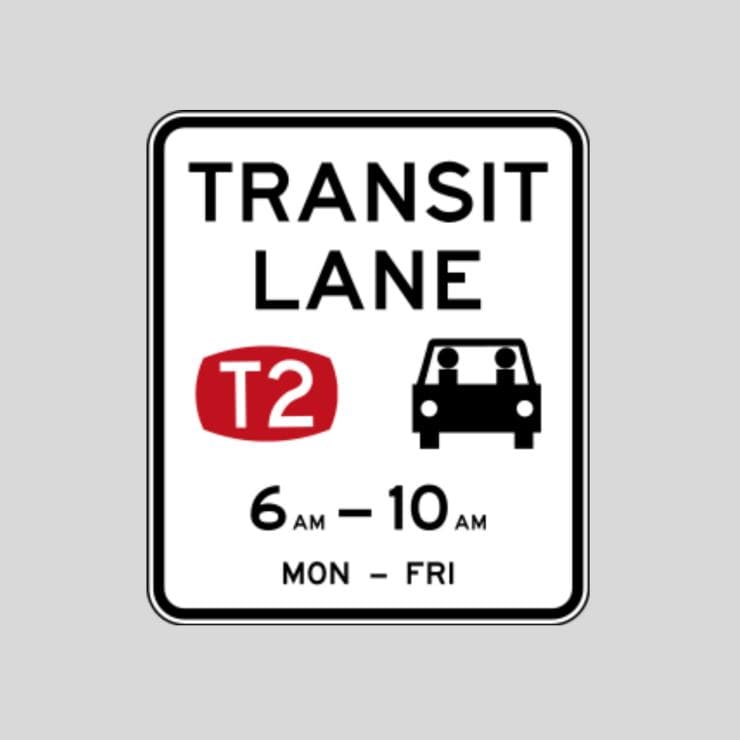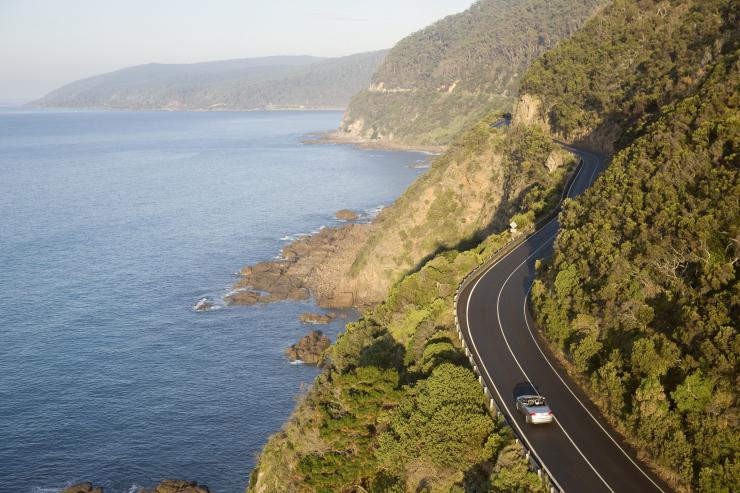The most important thing you need to know about driving in Australia is that we drive on the left. If you’ve grown up driving on the other side of the road, just remember that the driver should always be close to the centre of the road. And stay in the left lane unless you’re overtaking (always pass on the right); a broken white line in the middle of the road means you can overtake if it’s safe – if there are two lines you can only overtake when the one closest to you is broken.
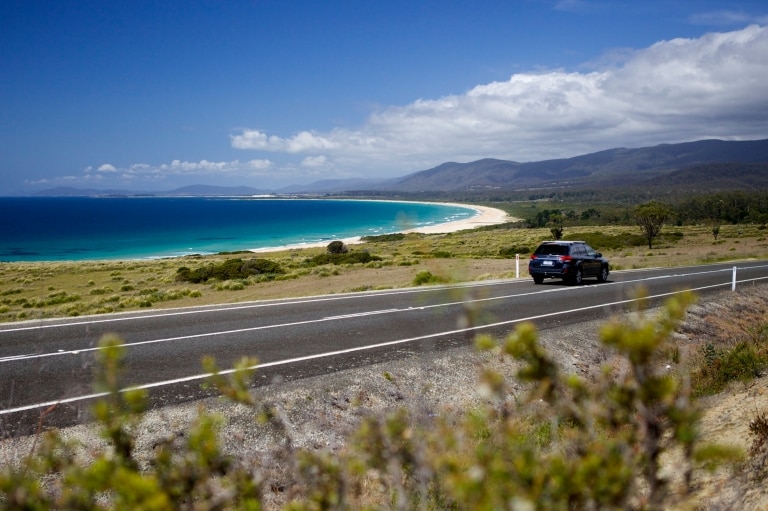
First-timers’ guide to driving in Australia
From buying fuel to road tripping in the outback, here’s everything you need to know about driving holidays in Australia.
By Lee Atkinson
Road trip holidays are one of the most interesting and popular ways to explore Australia. Whether you want to hug the coast or head off on an outback adventure, you’ll find plenty of scenic routes. There are convenient options for hiring a car or campervan, and our road network is expansive. Some regional and outback areas have dirt roads, but major roads are sealed and well signposted. Plus, fuel is easy to find (though if you are planning to drive in a remote area, it’s wise to carry a spare container of fuel). Once you leave the major cities, traffic is light and most drivers are polite – waving hello to fellow motorists is an Aussie tradition.
How to drive in Australia

Avoid Bay, Coffin Bay National Park, South Australia © Rob Blackburn/Tourism Australia
Rules to remember

Deniliquin, Cobar Highway, New South Wales © Lauren Bath
How to buy fuel in Australia

Caltex Service Station, Rockhampton, Queensland © RegionalQueenslander / CC BY-SA
Tips for driving in Australia

Robe, Limestone Coast, South Australia © South Australian Tourism Commission
Read next
Driving in Australia: road safety and regulations
Where to stay on a road trip

BIG4 Koala Shores Port Stephens Holiday Park, Port Stephens, New South Wales © Destination NSW
Where to go on a road trip

Red Centre, Northern Territory © Offroad Images/Tourism NT
Top tip
In the outback and country areas it’s best not to drive at night, as animals such as kangaroos can very difficult to see in the dark.


